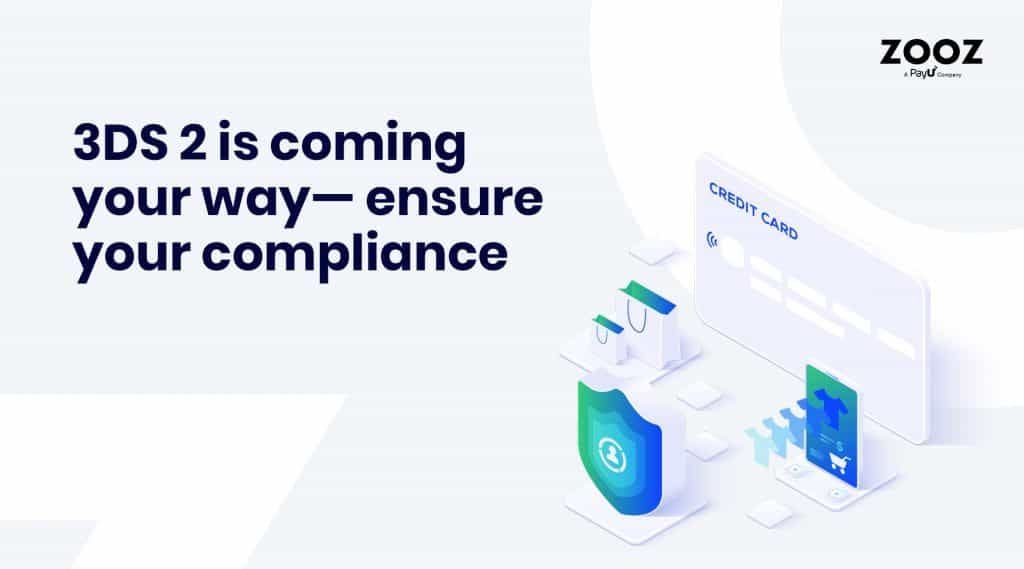Top 5 online payment trends that will shape 2020
As 2020 gets underway, we decided to explore the top online payment trends that are shaping, changing, reaching key tipping points, and driving disruption in online payments.
As e-commerce continues to rise, online payments are projected to rise from $82 billion to $138 billion between 2018 and 2024.
Such tremendous growth has merchants facing more challenges than ever before, that forces them to adjust their stack and offering to accommodate the changing market. These are the top 5 trends that hyper-growth merchants cannot afford to ignore in 2020:
Mobile payments rise to dominance
We start with a megatrend driving global growth in e-commerce. Mobile commerce, or m-commerce, is becoming the main medium for online payments. In 2020, the use of mobile devices in online shopping will continue to increase rapidly, especially in developing markets. New mobile payment providers will continue to emerge, and merchants will need to put a bigger emphasis on the shopping experience in mobile devices.
Estimates vary, but mobile payments are either about to overtake payments made via desktop or have already done so! If we zoom in on two major markets. In the US, by 2021, it is forecast that approximately 54% of all e-commerce sales will be generated via m-commerce. In China, m-commerce dominates the e-commerce industry, with 76% of e-commerce transactions completed via a mobile device as in those markets it is much more prevalent it is more common to have a mobile phone than an actual bank account.
The rapid rise of m-commerce has ramifications for all hyper-growth merchants. A focus on optimizing the mobile payments experience is critical in 2020 and beyond. Failing to offer a smooth, frictionless, and convenient mobile payments experience risks alienating customers and missing out on massive growth opportunities. The design and function of the mobile checkout are of particular importance. Introducing functionalities which reduce payments friction like one-click checkout, will be critical as shoppers’ intolerance to any form of inconvenience continues to rise.
Payment flexibility goes next level
In 2020 many merchants will need to consider offering an increased level of payment flexibility. In this case, payment flexibility does not refer to the need to provide localized payment options, methods, and currencies to customers in every market. That’s just expected and par for the course.
In the coming year, a growing number of customers will expect to have options to receive goods before they pay for anything, and split a purchase into several interest-free installments. The ‘buy now, pay later’ option is poised to take off in e-commerce payments in 2020, and is in fact, already well established in some parts of the world, in which Klarna is a very popular alternative payment method. Providing this type of payment flexibility will be of particular importance to merchants in the fashion and footwear industries, where customers often order numerous items to try, sending back anything they don’t want to keep.
Although merchants will generally pay a higher fee for providing these flexible payment options, doing so can lead to bigger baskets and more sales. What’s more, added payment flexibility of this kind can deliver a competitive advantage over other merchants not yet offering it. And let’s not forget, the competitive nature of e-commerce today, means that it’s vital to meet keep up with customer demands! The good news is that the potential growth in basket size, as well as an increase in conversions and the ability to move more full-price inventory, makes up for this added expense.
Cross-border payments surge
E-commerce has exploded around the world over the last decade. In 2020, the globalization of e-commerce will continue as more localized payment options will become available to simplify cross-border payments and improved logistics speed up delivery. According to Accenture, cross-border e-commerce now makes up 20% of e-commerce and is growing a 2X the rate of domestic e-commerce. China alone is anticipated to reach 1.5 billion US dollars in transaction value in B2C cross-border e-commerce in 2020. When it comes to B2B cross-border payments, Frost & Sullivan forecasts global B2B cross-border payment transaction volume to have reached about 2.3 trillion US dollars by the end of 2020. One impact of cross-border transactions continuing to surge is that hyper-growth merchants will have to contend with more complicated authorizations.
Compliance gets complicated
Regulators around the world will continue ramping up efforts to protect sensitive consumer privacy and fight against a growing threat of fraud. Consumer protection regulations that impact online payments will make it more challenging for hyper-growth merchants to keep their payment stacks compliant in 2020. Of course, GDPR and PSD2 are now already in effect. Hyper-growth merchants now operating or planning to operate within the EU will need to ensure compliance with stringent requirements concerning payment data collection and storage as well as Strong Customer Authentication (SCA) standards for online payments.
In the US, the California Consumer Protection Act (CCPA) went into effect on January 1st. CCPA requires merchants that collect or use the personal data of California residents (including payments information) to disclose upon request the categories of personal data collected about a consumer, and sources from which the personal data was collected, as well as several other details. Multiple other states have CCPA-inspired bills in the works, including New York, Massachusetts, and Maryland, and that’s not to mention compliance with regulations in other countries. The bottom line. New regulations are rolling out continuously, and hyper-growth merchants with global operations will begin to feel the impact of having to comply with an ever-increasing number of regulations. On the other hand, compliance has its benefits and potential to simplify the check out process for customers and thus increase their overall turnover. Either way, it is a central component that merchants need to prioritize within their stack.
AI & machine learning tools lead the way in fraud prevention
Despite new industry standards, regulations, and merchants able to employ more advanced fraud solutions, fraud will take center stage in online payments and e-commerce in 2020. Criminals have become more sophisticated and will continue to innovate, seeking out new techniques and softer targets this year. They will arm themselves with new technological tools and have the ability to access sensitive personal information, like credit card numbers, anonymously on the dark web with ease.
Strategies like address scrambling, synthetic identity fraud, and a range of others will place unprecedented pressure on merchants in what will be an ever-widening fraud landscape. Hyper-growth merchants must be prepared to face new and emerging threats and handle an increasing volume of old ones. Doing so will require the use of enhanced fraud detection solutions that use data, AI, and machine learning to protect customers without adding more friction to the payment experience will be critical. These solutions learn from each transaction to improve their accuracy and can adapt to shifts in the nature of fraud unlike traditional approaches such as rules engines and scoring. They are also far more capable of identifying potential fraud patterns that humans are unlikely to see.
With added complexities, 2020 is the year merchants must simplify their payments stack.
As e-commerce continues to boom, consumers increase their expectations, and new regulations roll out, online payments are not getting any easier. Payment stacks designed for the days when e-commerce was far more straightforward and local simply no longer cut it anymore. In 2020, hyper-growth merchants relying on fragmented and complex payment infrastructures will be increasingly incapable of supporting hyper-growth and face increased risks across the board. ZOOZ’s enterprise payment hub provides a secure, unified, and smart foundation that can handle the inherent complexities in today’s global payment ecosystem and quickly adapt to changes. To learn more about the benefits of ZOOZ’s advanced payments hub, make sure to contact us today.




